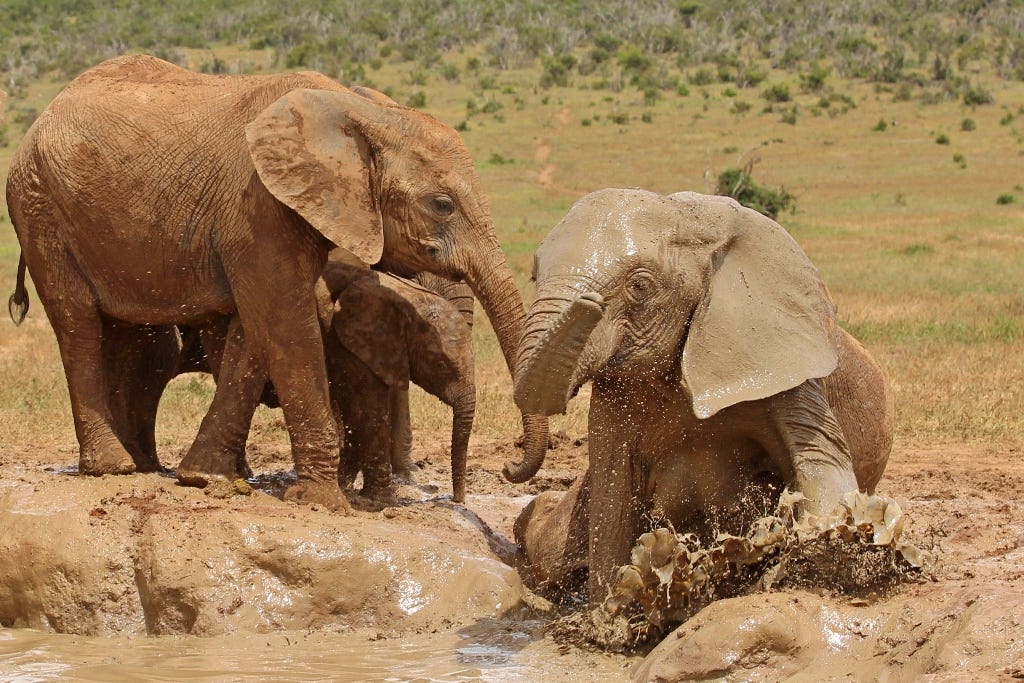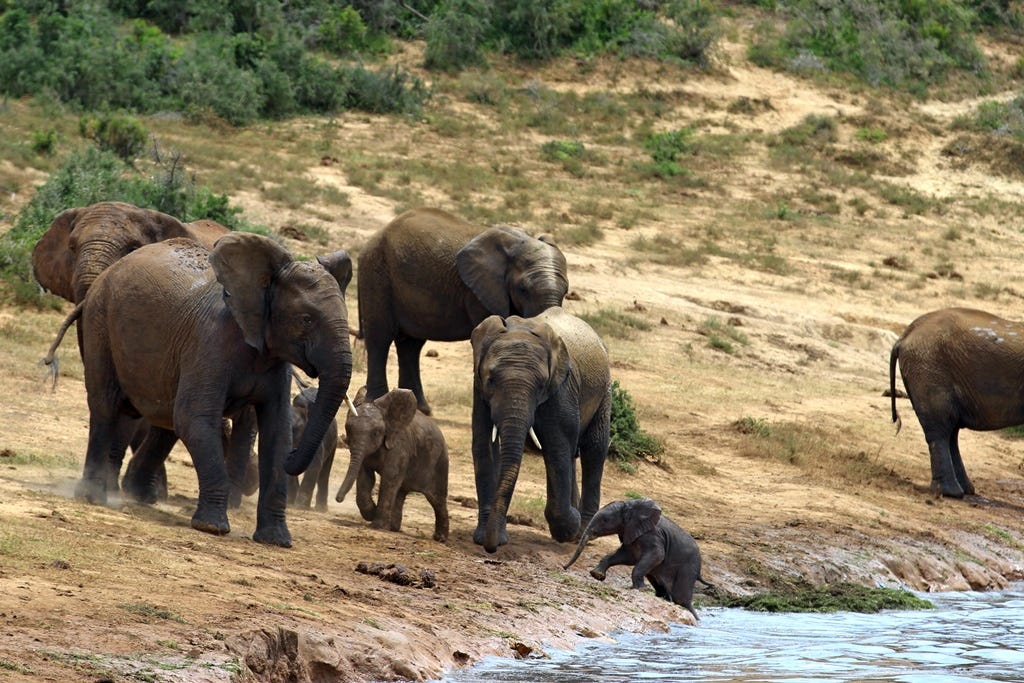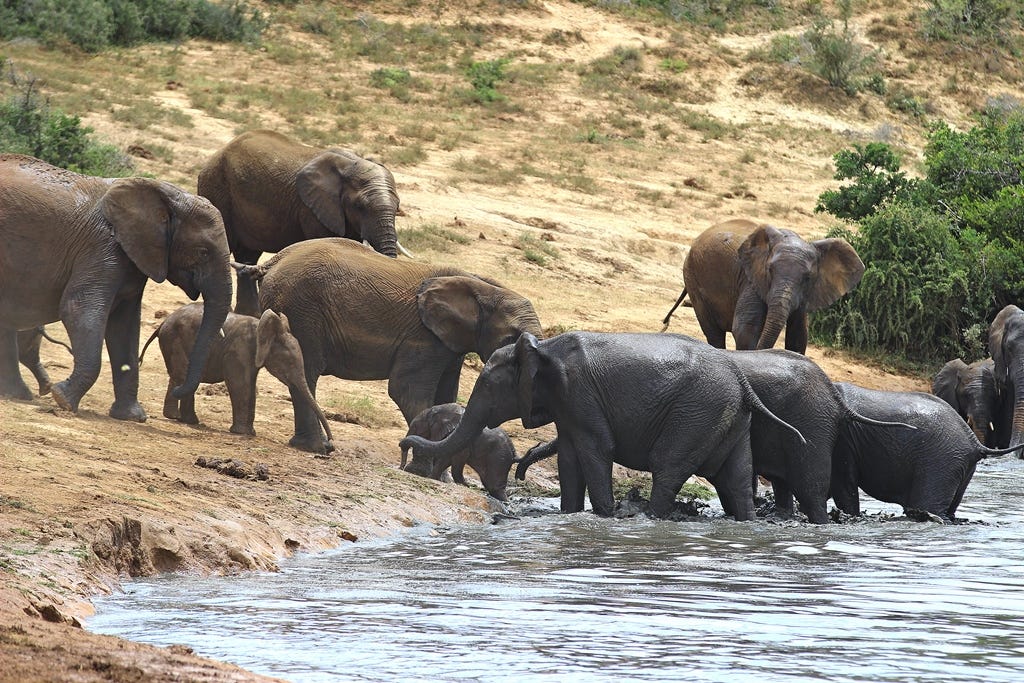Elephants are among the most absorbing animals to watch because they do interesting things – sometimes in the most unexpected ways. Of course, all animals in a game reserve do things, and occasionally in unusual ways, but most often, most animals are mostly predicable.
Take lions for example. People on social media groups are forever asking, “Where are the lions?” or “has anyone seen lions today?” How about this one, “I am taking overseas visitors into the park today, it would be great to show them some lions".
If they do get to see the lions, more often than not, they will be ‘flat cats’ – tawny patches snoozing in tall grass or under a bush.
Any regular visitor to game reserves will tell you stories about the time they watched a pride of lions for hours just lying around doing nothing more than following the shade around a bush. Then in the late afternoon, one by one the lions started getting restless and began their ritual stretches in between nuzzling each other affectionately.
They’re getting hungry, feeling the need for some fresh meat when fortuitously a herd of Cape buffalo appears at the top of a hill. Tons of powerful black bovines amble indolently down a gentle slope.
The lions hit stealth mode. They keep low and purposefully slink towards the path that the buffalo will surely cross.
The big cats wait. You wait. The buffalo take their time as they snuffle in the grass.
I look at my phone to see the time. It’s less than 35 minutes before the gates close. You may not arrive at the gate after six-thirty. Park management threaten you with all kinds of penalties.
The lead buffalo lazily lifts its head and takes in the gentle breeze. It can sense lions, but it’s not sure how long the scent has been around. Other buffalo check the air this time. Lions and buffalo often come to that water hole. It is not surprising that their odours should intermingle.
It will take about 30 minutes to drive to the gate. Perhaps a bit less if I push the legal speed limit. That’s dangerous. I could bump an animal crossing the road or hit a deep pothole. Driving faster kicks up a lot more dust.
A huge buffalo bull strolls to the front of the herd. He moves slowly but with confidence and continues down the path towards the lion ambush. The other buffalo follow him, trusting the leader to ensure their safety.
The lioness closest to the path adjusts her position. She crouches low, ready to spring.
The gates close in half-an-hour.
Slowly the buffalo begin to pass her by. She doesn’t go for the lead bull. There are easier, smaller targets coming up in the line behind him.
I have to leave. It will be difficult to make it on time.
I miss the hunt and I almost miss the gate closing time, but it was really very exciting anyway. Perhaps I’ll be luckier next time and the lions can bring forward their hunting schedule.
Looking for action
If you see zebras – most of the time they are either standing still, staring at cars or slowly grazing their way across a field. Not much excitement here. OK, sometimes they fight or chase each other around the veldt (savannah) then your adrenaline rush makes you fumble about as you try to capture that incredible prize-winning photo.
That camera strap always seems to hook itself around the handbrake whenever anything exciting happens and forces me to spring into action.
Red hartebeest? You see plenty of those in the Addo Elephant Park (AEP) and quite often right close up to your car. Sometimes they just stand there in the road looking at you, obviously wondering what you are staring at. They seem to be able to withstand the burning heat of the midday sun much better than most animals. They just stand around or even lie down chewing the cud.
Of course there was that time when a pair of red hartebeest put on a fantastic display of antelope wrestling. Their heads clashed violently and their horns became inter-locked. That was superb – about half an hour of ultimate hartebeest combat made for some pleasing photos.
But that was exceptional.
Elephants, on the other hand, can almost always guarantee lively entertainment.
It’s summer here now in the southern hemisphere and January and February are particularly hot months so it is always a good strategy to go to the water holes and watch the elephants teach the other animals to have fun.
The Hapoor Waterhole in the AEP is a great for photography as the elephants not only drink and shower there, but they often swim in the muddy water. The banks are a little steep and slippery so they slip and slide into the water sometimes with an enormous splash.

Elephants actually play with each other, cavorting in the cooling water and using their trunks as periscopes. It is beautiful to watch as you can park your car within a dozen metres of the banks and photograph a herd of elephants frolicking around without a care in the world.
It is a marvellous experience and I have taken thousands of pictures from that parking apron. At times there are so many elephants around that it is impossible to decide where to point your camera.
Rescue at Rooidam
A few weeks back, Ilza and I were at Rooidam in the AEP watching several herds of elephants amusing themselves in the water. We were in the parking area which is not as close to the edge of the water as the one at Hapoor, but nevertheless allows for a fantastic view of the small dam.
A family group of five elephants walked along the side of the dam looking for a place of easy access to the water. The banks were not steep but the youngest member of the group was tiny – it had clearly been born within the last few weeks – so it would have difficulty getting a drink. There were two other calves that appeared to be about one or two years old, two sub-adults and an adult cow.
Over the years, there have been one or two cases where baby calves get stuck in a waterhole, however the banks of Rooidam do not appear to hold any particular dangers.
But the mud is very slippery.
This very small calf had just had a drink and was getting out of the water to follow its family when it began having difficulty getting traction. Its feet could just not get a grip on the slippery surface of the mud. It took a step forward and slipped a step backwards. It moved faster and slipped faster.

The situation suddenly looked desperate. It was dangerous but funny as it looked like an old fashioned cartoon. The baby’s legs moved faster and faster but it did not get anywhere.
The mother and sub-adults became very anxious very quickly and began trumpeting their concern. They shuffled quickly from side to side at the water’s edge encouraging their baby to try harder.

To our amazement, several elephants bathing on the other side of the small dam came charging through the water and quickly nudged the young calf safely up the bank.
The heart-stopping moment of panic was all over as quickly as it began. All’s well that ends well.
In less than a minute, the calf was once again full of attitude galloping alongside its older siblings.
It is such a privilege to be able to witness such scenes. We really enjoy our visits to the AEP and if you enjoyed this Real Safari Newsletter, please tell your friends, we would love to grow our list of subscribers.









